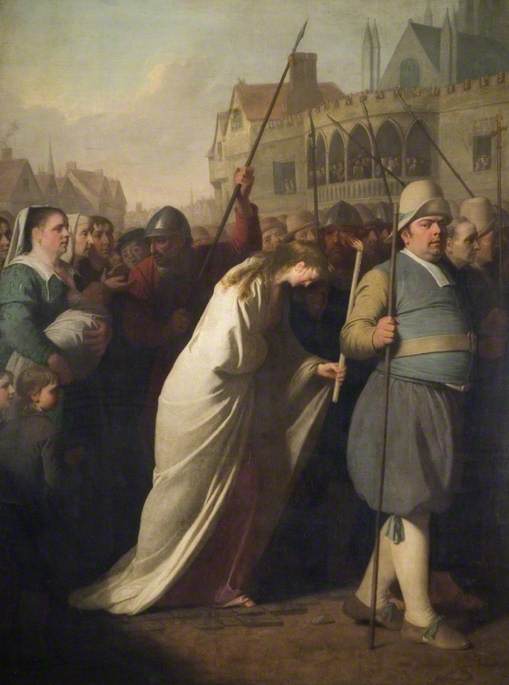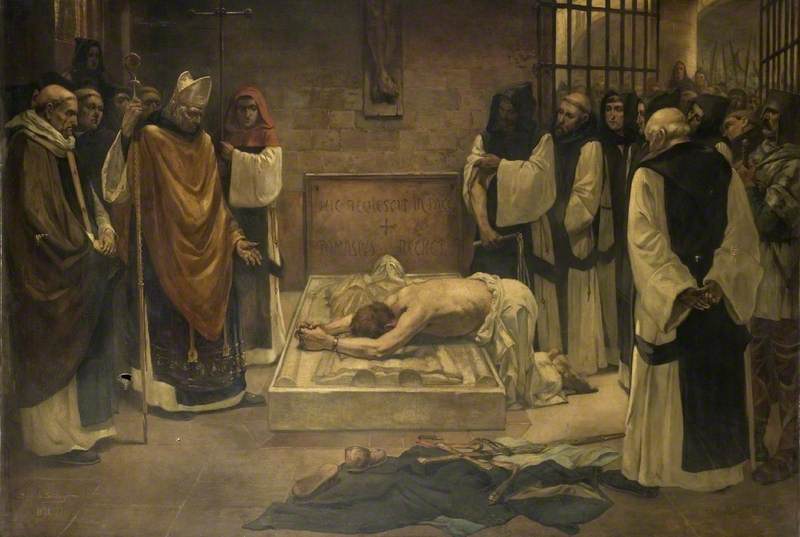Spoiler warning: Game of Thrones Season 5 finale.
Sunday’s (in my opinion rather lacklustre) Game of Thrones finale saw one of the more talked about scenes of the series; Cersei’s “walk of shame”. Stripped completely naked with her hair shaved off, Cersei walked through the city of King’s Landing, to the taunts and jeers of the peasants, who threw all manner of vegetables and bodily fluids at her, as she passed. The ‘walk’ (as it shall be forever known) has divided fans into those who think the walk was unnecessary and another example of GoT‘s poor treatment of female nudity, to those who praise the public act of penance for humbling Cersei in such a manner. Cersei’s treatment sparked outcry, even though just a few episodes ago the same punishment was meted out to the High Septon, whose own walk of shame met with no comment. In an interview with George R R Martin, the author claimed that such punishment was necessary for Cersei and was well rooted in medieval history.

Historically, the application of penance was entirely decided by a person’s confessor. Most of the time private confession would be enough to absolve the sinner of their crimes, however the confessor could also impose additional penance dependent on the nature of the sin. Acts of public penance were reserved for specific sins and varied in severity; from being ordered to appear in church on certain days to being whipped in public. A public act of atonement need not be a walk of shame a la Cersei. In fact, the walk itself took on many forms, with the sinner being stripped naked reserved only appearing at intervals in history. The medieval French adulteress was often punished in such a way for her fornication, as were fifteenth century Lollards (though it is unclear what sin warranted such a punishment for the latter);

The similarities between the above description and the scene in GoT are obvious, though Cersei was completely nude, as she would have been historically, to mark her as an adulteress.
The public walk, however, was not always so abjectly humiliating. In its most common form it was a standard pilgramage; wherein a sinner would journey to a particular holy site as a means of atonement. As well as the journey itself, pilgrims would be expected to patronise the church which they were visiting, or if they could not, perform tasks of manual labour essential to the upkeep of the church and its grounds. The two most famous examples of a public walk of shame were performed by Henry II and Jane Shore, though neither would reach Cersei levels of degradation and neither were recompense for adultery.
Henry II of England walked barefoot to Canterbury Cathedral, to publicly atone for his role in the death of its Archbishop; Thomas Becket. Upon his arrival, he prostrated himself on the steps, and allowed each of his bishops (and all eighty of the resident monks) to beat him with a rod. He would also make financial reparation to the cathedral. Jane Shore, the long term mistress of Edward IV, was sentenced to walk from St Paul’s Cross in her petticoat by Richard III, ostensibly for her crimes of fornication but in actuality for her role in conspiracies against Richard. While she made her walk, wearing very little, she apparently attracted a great deal of male attention so much so that a solicitor bystander offered to marry her. Marry him she did and after her release from prison she lived out the remainder of her life as a respectable citizen. As was the case with Henry II the walk itself were not the punishment, simply the public declaration of the sin. In Henry’s case it was the flagellation at the hands of the priests and the compensation that made up the actual punishment, in Jane’s it was a period of imprisonment. The act of walking was a demonstration of intent to change ones ways and refrain from sinning again.

(c) Birmingham Museums and Art Gallery; Supplied by The Public Catalogue Foundation
As far as an act of atonement goes, the walk of shame was actually counter intuitive and not just because it involved a so called sinner walking barefoot, practically or actually naked, through crowded streets to be jeered and abused by the gathered crowds. The whole point of the walk was to atone, albeit publicly, for a particular sin, the specifics of which were not always disclosed to the gathering public. Dogma taught that after atonement had been completed that sin was no longer a stain upon the sinner’s soul and they could continue in life as though it had never happened. This contrasts greatly with the fact that such an act of public repentance would remain in the minds of the community and had the potential to ruin a person’s reputation for life, given that people tended to remain in the same locations for their entire lives. The person was simultaneously forgiven their sins and absolved while also never able to completely move away from the stigma of their actions.
As far as GoT is concerned the walk of shame was just an interlude for Cersei, in order for her to be reunited with her son at the Red Keep. She has yet to go on trial for her crimes and so her actual punishment is yet to be determined.
*featured image: The Penance of King Henry II at the tomb of Thomas a Becket
(c) Northampton Museums & Art Gallery; Supplied by The Public Catalogue Foundation













